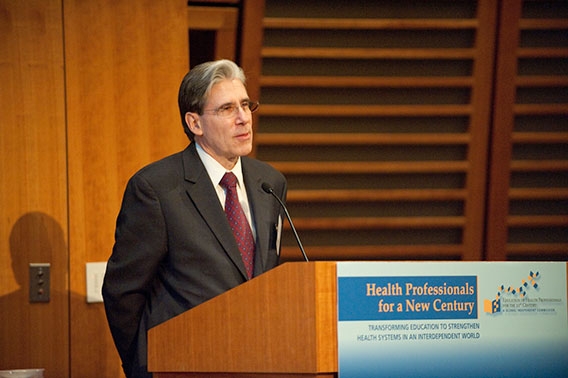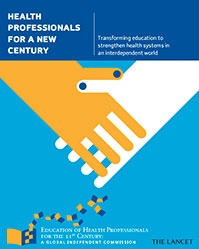Transforming Health Professional Education for the 21st Century

Two years after the Global Commission on Health Professional Education issued its 2010 report, its findings are starting to take root in local and regional contexts, as demonstrated by the range of discussions on medical education reform in countries around the world, as reported by co-chairs Julio Frenk and Lincoln Chen. The breadth and intensity of follow-up activities reflect both the incipient demand for reform as well as energetic efforts by commissioners and stakeholders in dissemination and advocacy.
Approaches to reviewing, debating, and adapting the Commission’s recommendations for institutional, national, and regional contexts have included the following:
- Pilot projects: The US Institute of Medicine’s (IOM) Global Forum on Innovation in Health Professional Education (IPE) selected four multidisciplinary, multi-partner innovation collaboratives—in Canada, India, South Africa, and Uganda—to pilot ideas introduced in the Commission’s report. At workshops in August and November 2012, participants examined medical education leadership, ethics, and professionalism through innovation collaboratives and other channels. In Canada, for example, the Canadian Interprofessional Health Leadership Collaborative is looking at some of the key drivers of change in health care as it develops a learner-focused and competency-based educational model.
- Cross-border dialogue: Experts and policymakers from the education and health sectors in three German-speaking countries—Austria, Germany, and Switzerland—are considering barriers that may impede reforms and prospects for operationalizing Commission recommendations. They are looking to build upon the report with a deeper understanding of social factors, a greater emphasis on health promotion and prevention, and more attention devoted to active roles for patients.
- Disseminating among health professionals: Discussion of the Commission’s recommendations among Peru’s health professional communities, facilitated by the report’s translation into Spanish, was launched with panels at three major events in 2011: the National Meeting on Human Resources in Health; the annual convention of the Peruvian American Medical Society; and the Seminar on Health, Public Policy, and Intercultural Health. Physicians, nurses, midwives, health administrators, policymakers, educators and others put forth their ideas for improving the quality of health professional training and matching competencies to needs.
- Transforming the curriculum: Harvard School of Public Health (HSPH) is taking a fresh, in-depth look at its educational strategy, drawing on some of the idea of the Commission report. As it approaches the 100th anniversary of the founding of the Harvard-MIT School for Health Officers, HSPH’s “Roadmap to 2013,” now under design, will guide its next century of teaching and learning and help define the future direction of higher education in public health.
CMB has provided support for the five-member Asia-Pacific Regional Network for Health Professional Education Reform (5-C Network). Educators and policy-makers from Bangladesh, China, India, Thailand, and Vietnam are finding value in using a common protocol and tools for their multi-country survey of health professional education. Through their discussions, they have found that while there is growing support for providing universal health coverage in their respective countries, further efforts to develop the human resources for health education and management will be needed to achieve that goal.
“We have accomplished our follow-up goals to disseminate and advocate globally for the report’s findings,” wrote co-chairs Julio Frenk and Lincoln Chen in their November/December 2012 newsletter. The Global Commission on Health Professional Education now looks forward to the innovative ways that national and regional institutions will continue to push reform initiatives forward.

